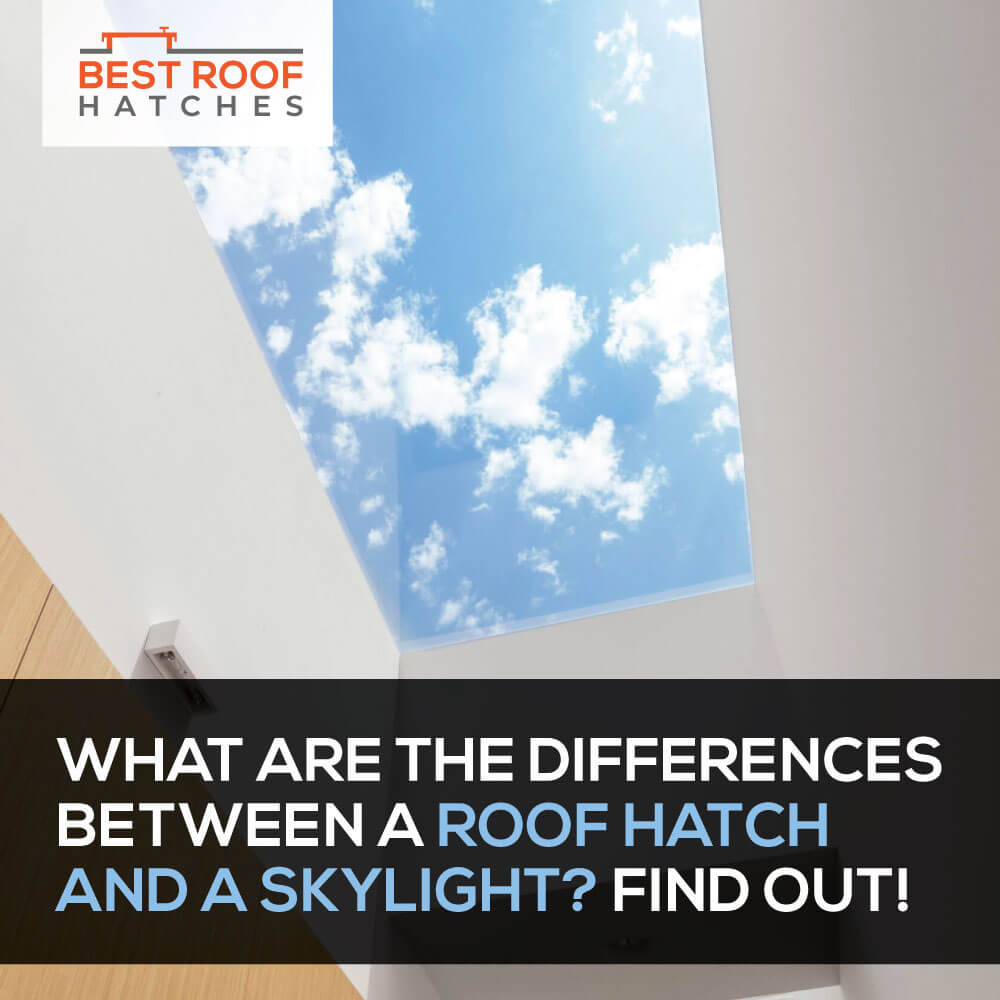Share this
What Are the Differences Between a Roof Hatch and a Skylight? Find Out!
Posted by Best Roof Hatches on 2021 Aug 4th
Some objects are different but have similar functions. Often, they are so alike that we find the difference confusing. Consider the products, roof hatches, and skylights. Sometimes it's hard to figure out if they are the same or different. So let us go in deeper and see what sets these products apart and how they function.
Interesting Read: "Improvements in Roof Hatch Design That You Should Check Out."
What Is a Roof Hatch?
Roof hatches sit on a flat surface at the top of a building providing access to the roof for maintenance or installation purposes. The team in charge of said installation will have a convenient way to do regular maintenance and equipment to pass through if needed.
One can buy roof hatches as pre-assembled units from various manufacturers. Commonly, a hatch's installation is on the roof before the roofing installation, or a curb fitting goes on before the roof membrane installation. Roof hatches are typically opened from the inside and have a ladder access that rises from the structure's floor.
One can fit roof hatches with smoke and fire detectors, allowing them to open in the event of smoke or fire. The roof hatch can then open, allowing for ventilation and smoke removal from the structure. Modern roof hatches use springs or hydraulic pistons to help open and close the hatch, as well as waterproof gaskets to keep the roof hatch from leaking.
What Is a Skylight?
The utilization of skylights is commonly to provide natural light in residential, public, and commercial structures. Increased daylight can lead to less electrical lighting and smaller window panes, saving energy, money, and the environment. In some buildings, sunlight can reduce lighting energy use by up to 80%.
Skylights include a range of different products that allow natural light into the building. It can be a particular part of the roof or even the entirety of its space. The other term used for it is roof light. The purpose of having this installation is for daylight savings. It has more applications now in our modern time because it can merge with some technologies.
Skylights add positive benefits to a building. According to research, children in daylight-optimized classrooms have much better test scores than students in darkened classrooms. Other research shows that daylight has a good impact on physiological and psychological well-being, boosting productivity in various settings, including retail sales.
In terms of cost reductions, the US Department Of Energy claimed that many commercial buildings could lower total energy expenses by up to a third by maximizing daylighting. Most commercial warehouses use skylights, and 'big box retailers' have started using them to save energy and money in recent years.
The Similarities and Differences
It is a matter of perspective. A roof hatch can become a skylight if its design is both an accessway to the roof and a way to let natural light enter the building. Take flat-panel skylights as an example. They function as both; access hatches and an excellent way to let the sun's natural light inside.
If the object is merely to let the light in and nothing about being an access point, then that object is a skylight and not a roof hatch. That is what separates a roof hatch and a skylight. A roof hatch also has a typical rectangular feature, and it has an access stair and a latch. It gives access to the top area of the building for equipment and people to pass through.
Conclusion
Whether it's a roof hatch or a skylight, the benefits to a building are something people cannot deny. With many now becoming aware that the roof area is transformable, it will be fun to see what creative things are yet to come. If you ever find yourself in need of solid advice, remember only to get them from licensed roofing professionals.

